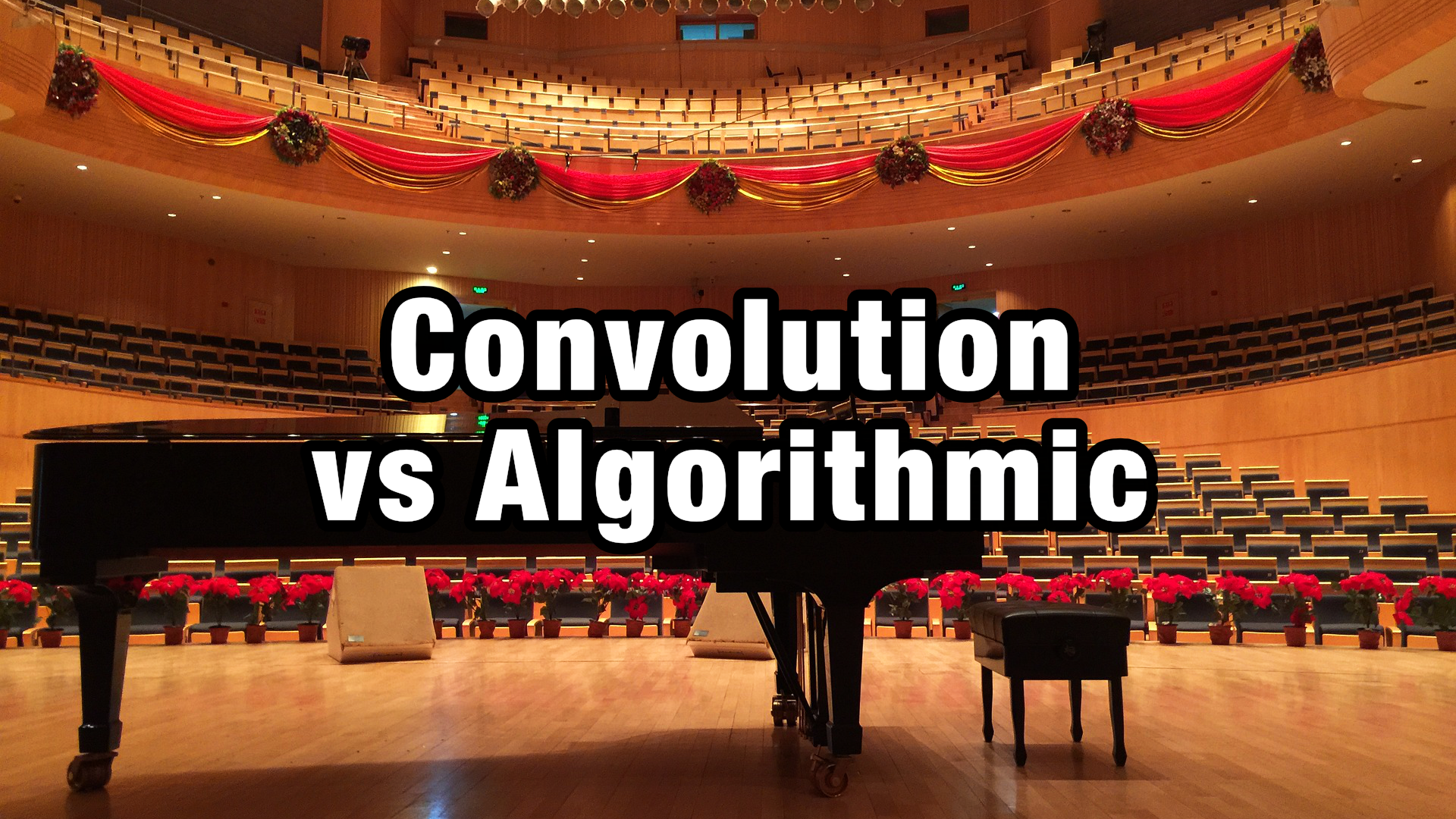 As a music maker, I’m sure you are always looking for the “perfect reverb plugin”, right?
As a music maker, I’m sure you are always looking for the “perfect reverb plugin”, right?
Well, it is important to first learn the difference between convolution reverb and algorithmic reverb, and why it makes sense to at least have 1 reverb of each type in your music producer tool kit.
What is Reverb?
Reverb is the summary of all the sound waves bouncing back on walls and surfaces around the sound source. For this reason reverb is sometimes simply called “room tone”.
For example, if you stand in the middle of the room and clap your hands. The sound waves of your clap will first travel outward in all directions (a sphere), and then hit any surface around it.
The sound waves can either be absorbed or reflected. Softer materials (like cloth and fabric) will absorb more frequencies, while harder flat surfaces (like walls) will reflect more of the sound waves.
Convolution Reverb vs Algorithmic Reverb
There are 2 main types of software reverb plugins you can use. Algorithmic reverb plugins are based on digitally calculating the virtual room using algorithms in the plugin software code.
The 2nd type of reverb plugin is called a convolution reverb plugin, which is instead based on a real recorded space. You could say that you record the “acoustic fingerprint” of that room. Then you can apply this fingerprint as a convolution reverb preset (called impulse response).
The advantage of an algorithmic reverb is that it is much more flexible, meaning that you can sculpt and shape all reverb preset settings to create your virtual room you want.
Algorithmic reverbs can sound pretty natural, but they mainly shine in creating completely unique virtual rooms and spaces, wher
The advantage of a convolution reverb on the other hand, is that you can get an extremely natural sounding room, hall, church or whatever space the “acoustic fingerprint” was recorded.
But this makes the reverb less flexible in terms of settings and sound design. You also need a huge bank of of impulse responses (recorded acoustic fingerprints) to get the most out of a convolution reverb.
3 Best Convolution Reverb Plugins
3 Best Algorithmic Reverb Plugins
Why you use Reverb Effects
When you record a sound very close to a microphone in a studio, the mission is to reduce as much of the natural reverb in your recording space as possible. Meaning you want to record a “dry” version of your vocals or instruments.
This is because you want to have a clear source, which you then have infinite possibilities to shape with adding reverb inside your DAW (music production software).

